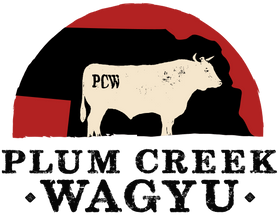The Legacy of Wagyu: How a Japanese Tradition Became a Global Phenomenon
Wagyu beef, often hailed as the finest and most luxurious meat in the world, has a long and rich history that dates back over 100 years. Originally from Japan, this highly-prized beef has grown from a regional delicacy to a global phenomenon, transforming how the world views luxury dining. But what is it that makes Wagyu so special, and how did it become synonymous with quality and indulgence around the globe?
The Origins of Wagyu Beef in Japan
The word "Wagyu" itself translates to "Japanese cattle," and it refers to several breeds of cattle native to Japan, with the most famous being the Japanese Black, known for its exceptional marbling. The history of Wagyu dates back to the 2nd century when cattle were used primarily for agricultural purposes, pulling plows and carts. It wasn’t until the 19th century that Japanese farmers began to focus on breeding cattle for their meat, with the goal of creating a tender, flavorful beef that would be distinctively Japanese.
Over the centuries, Wagyu cattle were raised in the remote, mountainous regions of Japan, where farmers employed specific care techniques. The cattle were fed a diet rich in rice straw, corn, and barley, and were often given massages or even beer to encourage relaxation and increase marbling. This meticulous care resulted in beef with a unique texture, full of tender marbling that melts into a rich, buttery flavor when cooked.
Wagyu Beef in Japan: A Cultural Tradition
In Japan, Wagyu is more than just a luxury product; it’s a cultural experience. Wagyu beef is often enjoyed at high-end restaurants, where the focus is on the art of preparation and presentation. The Japanese take great pride in the quality of their beef, and Wagyu has become a symbol of both craftsmanship and luxury. It’s often served in special ceremonies, holiday meals, and prestigious events, marking important milestones in life.
The distinct marbling in Wagyu beef, often referred to as "sashi," is a product of the genetic traits of Wagyu cattle, which have been carefully bred for generations. This marbling gives Wagyu its signature tenderness, which makes each bite melt in your mouth. Japan’s dedication to preserving the traditional methods of raising Wagyu ensures that each cut of beef reflects the care and skill passed down through generations.
Wagyu's Global Reach: From Japan to the World
In the late 20th century, the desire for Wagyu beef began to reach beyond Japan's borders. As global travel increased and interest in gourmet dining rose, chefs and food enthusiasts began to recognize the unmatched quality of Wagyu beef. American, Australian, and even European farmers started to breed their own versions of Wagyu cattle, leading to the rise of "American Wagyu" and "Australian Wagyu." While these versions may differ slightly in flavor and texture due to different feeding practices and climates, they still carry the legacy of Japan’s beef culture.
The rise of international markets for Wagyu beef has made it accessible to more consumers, but it also has driven up demand for high-quality Japanese Wagyu. Today, only a small percentage of true Japanese Wagyu is exported, with certain cuts reaching astronomical prices. In Japan, certain regions, such as Kobe, are known for their exceptional Wagyu, which continues to be considered the gold standard for beef lovers around the world.
The Enduring Appeal of Wagyu Beef
Wagyu beef is more than just meat—it’s a symbol of tradition, luxury, and exceptional craftsmanship. From the careful breeding of cattle to the meticulous feeding and care, every step in the production of Wagyu beef is rooted in a deep respect for the animals and the culinary heritage of Japan. As it continues to captivate the global palate, Wagyu beef remains an extraordinary testament to the artistry and dedication that goes into producing the finest beef in the world.
Related Posts
Sustainability in Wagyu Ranching: How Plum Creek Wagyu is Committed to the Environment
Explore how Plum Creek Wagyu is committed to sustainability with practices like rotational grazing, water conservation, humane treatment of cattle, and more. Learn about our efforts to produce high-quality beef while protecting the environment.
Wagyu Beef vs. Angus Beef: A Flavor Showdown
Discover the differences between Wagyu beef and Angus beef in this comprehensive showdown. Learn about flavor, texture, and the overall eating experience to determine which premium beef is right for you.
Wagyu Beef Recipes for Every Season: From Summer Grilling to Winter Braising
Explore seasonal Wagyu beef recipes perfect for any time of the year. From summer grilling to cozy winter braises, discover easy and delicious ways to incorporate premium Wagyu into your meals.
Health Benefits of Wagyu Beef: Why It's a Premium Choice
Discover the health benefits of Wagyu beef, from its heart-healthy monounsaturated fats to its higher levels of omega-3 fatty acids and CLA. Learn why Wagyu beef is a premium choice for those seeking a flavorful yet healthier alternative to traditional meats.
Pairing Wagyu Beef with Wines: A Guide to the Perfect Match
Discover expert tips on pairing Wagyu beef with the perfect wines. From Ribeye to Filet Mignon, explore the best wine matches to elevate your dining experience and make every bite of Wagyu beef unforgettable.
The History and Origins of Wagyu Beef: From Japan to Nebraska
Explore the rich history of Wagyu beef, tracing its origins from ancient Japan to the modern-day farms of Nebraska. Learn about the unique breeding practices and cultural significance of Wagyu, and discover how Plum Creek Wagyu brings this exceptional beef to your table.








